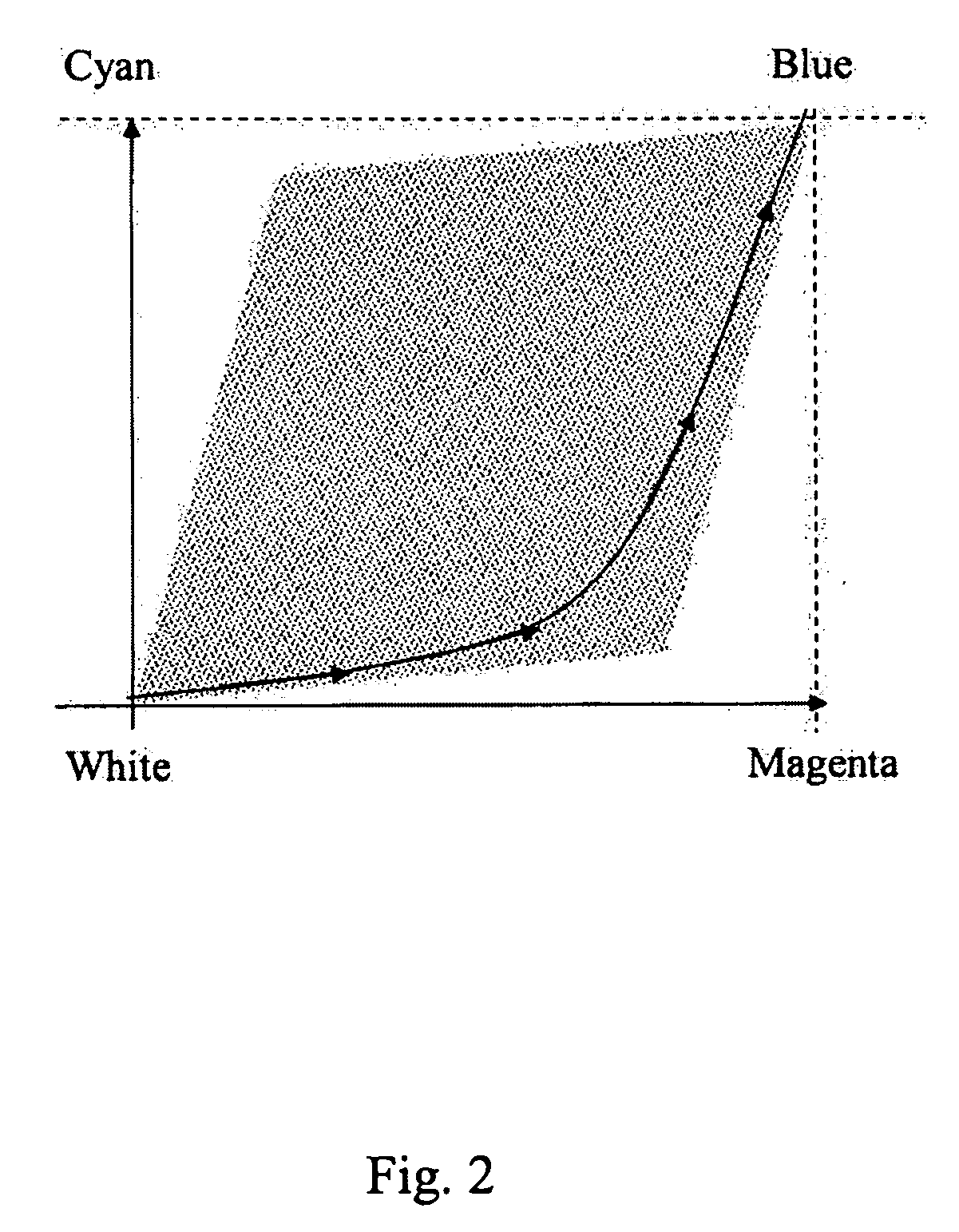Print head pulsing techniques for multicolor printers
a multi-color printer and print head technology, applied in the field of multi-color thermal imaging systems, can solve the problems of increasing the complexity and the cost of such printing systems, and achieve the effect of reducing the peak power requirements of the print head and reducing the coincidence of pulses
- Summary
- Abstract
- Description
- Claims
- Application Information
AI Technical Summary
Benefits of technology
Problems solved by technology
Method used
Image
Examples
examples
[0149]The thermal imaging system of the invention will now be described further with respect to specific preferred embodiments by way of examples, it being understood that these are intended to be illustrative only and the invention is not limited to the materials, amounts, procedures and process parameters, etc. recited therein. All parts and percentages are by weight unless otherwise specified.
[0150]The following materials were used in the examples described below:
[0151]Leuco Dye I, 3,3-bis(1-n-butyl-2-methyl-indol-3-yl)phthalide (Red 40, available from Yamamoto Chemical Industry Co., Ltd., Wakayama, Japan);
[0152]Leuco Dye II, 7-(1-butyl-2-methyl-1H-indol-3-yl)-7-(4-diethylamino-2-methyl-phenyl)-7H-furo[3,4-b]pyridin-5-one (available from Hilton-Davis Co., Cincinnati, Ohio);
[0153]Leuco Dye III, 1-(2,4-dichloro-phenylcarbamoyl)-3,3-dimethyl-2-oxo-1-phenoxy-butyl]-(4-diethylamino-phenyl)-carbamic acid isobutyl ester, prepared as described in U.S. Pat. No. 5,350,870;
[0154]Leuco Dye I...
example i
[0182]A two color imaging member such as is illustrated in FIG. 8 and further including an overcoat layer deposited on the cyan color-forming layer was prepared as follows:
[0183]The magenta image-forming layer was prepared as follows:
[0184]A leuco magenta dye, Leuco Dye I, was dispersed in an aqueous mixture comprising Airvol 205 (4.5% of total solids) and surfactants Pluronic 25R2 (1.5% of total solids) and Aerosol-OT (5.0% of total solids) in deionized water, using an attriter equipped with glass beads, stirred for 18 hours at 2° C. The average particle size of the resulting dispersion was about 0.28 microns and the total solid content was 19.12%.
[0185]Acid Developer I was dispersed in an aqueous mixture comprising Airvol 205 (7.0% of total solids), Pluronic 25R2 (1.5% of total solids), and deionized water, using an attriter equipped with glass beads and stirred for 18 hours at 2° C. The average particle size of the resulting dispersion was about 0.42 microns, and the total solid ...
example ii
[0217]This example illustrates a two-color imaging member such as is illustrated in FIG. 8. The top color-forming layer produces a yellow color, using a unimolecular thermal reaction mechanism as described in U.S. Pat. No. 5,350,870. The lower color-forming layer produces a magenta color, using an acid developer and a magenta leuco dye.
[0218]The magenta image-forming layer was prepared as follows:
[0219]Dispersions of Leuco Dye I and Acid Developer I were prepared as described in Example I, part A above.
[0220]Acid Developer II was dispersed in an aqueous mixture comprising Airvol 205 (2% of total solids), Dowfax 2A1 (2% of total solids) and Irganox 1035 (5% of total solids) in deionized water, using an attriter equipped with glass beads and stirred for 24 hours at 10-15° C. The average particle size of the resulting dispersion was about 0.52 microns and the total solid content was 22.51%.
[0221]The above dispersions were used to make the magenta coating fluid in proportions stated bel...
PUM
 Login to View More
Login to View More Abstract
Description
Claims
Application Information
 Login to View More
Login to View More - R&D
- Intellectual Property
- Life Sciences
- Materials
- Tech Scout
- Unparalleled Data Quality
- Higher Quality Content
- 60% Fewer Hallucinations
Browse by: Latest US Patents, China's latest patents, Technical Efficacy Thesaurus, Application Domain, Technology Topic, Popular Technical Reports.
© 2025 PatSnap. All rights reserved.Legal|Privacy policy|Modern Slavery Act Transparency Statement|Sitemap|About US| Contact US: help@patsnap.com



